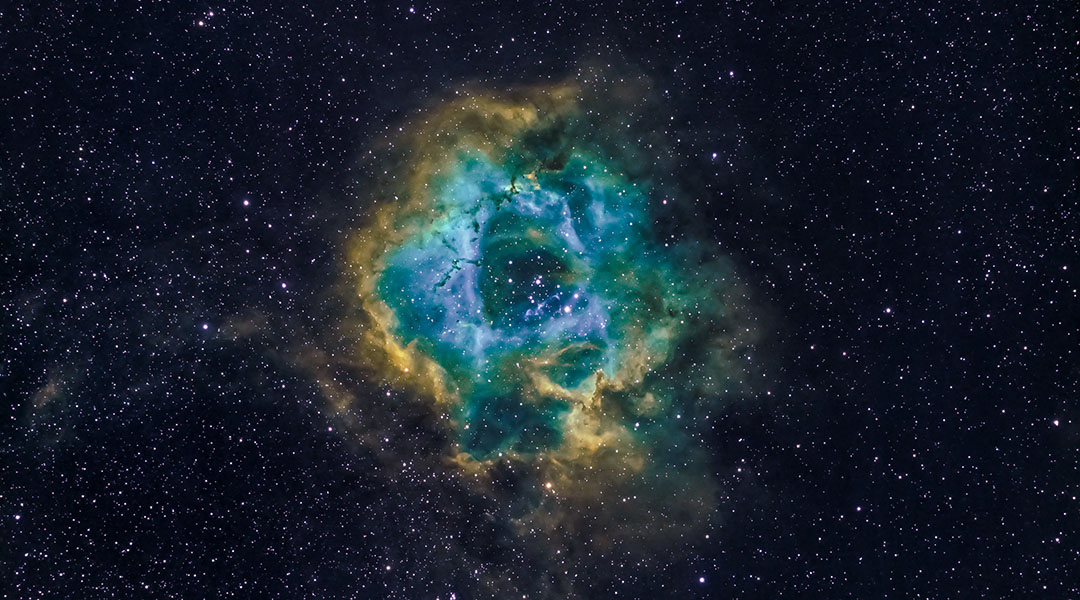For decades, physicists have speculated about the existence of dark matter, a mysterious substance that permeates space and accounts for about 85% of all matter in the Universe.
Though no one has ever directly observed dark matter, it manifests itself through observable gravitational interactions with other particles and radiation. Without it, the amount of visible matter alone would not be enough explain the gravitational forces necessary to keep stars in their observed orbits within galaxies, and maintain cohesion in galactic clusters, and explain gravitaional lensing effects caused by the bending of light as they pass near galaxies.
While these astronomical observations hint toward its presence, astronomers are still unsure as to its composition. The nature of the particles that make up dark matter remains elusive.
“Historically, the most popular candidate was a so-called WIMP (weakly interacting massive particle),” explained Mark Hertzberg of Brown University in an email. “However, a range of experiments have put severe pressure on such models. As such, attention has started shifting to other models, especially to particles called axions. The axion’s mass is not known, but it is expected to be light, about twenty orders of magnitude lighter than neutrinos.”
In addition to a lack of empirical results, an issue arises with WIMPs as a candidate for dark matter. Theoretical calculations predict that if WIMPS do constitute dark matter, their density in galactic centers should be very high. However, recent observations have revealed no pronounced peaks in the distribution of dark matter.
But if dark matter consists instead of axions, then due to the quantum properties of these particles, the formation of regions with a high density of dark matter is not expected.
The quantum properties of dark matter
According to quantum mechanics, elementary particles behave in many aspects like waves, with wavelengths inversely proportional to their masses. This means that ultralight axions should have wavelengths of the order of tens of trillions of kilometers, preventing dark matter from gathering into compact, dense clusters because of their enormous size.
“The popular paradigm of axion dark matter predicts divergence of the mass density through so-called ‘cusps’ at the centers of all galaxies, but observations imply smoother density profiles than expected,” said Abraham Loeb, the Frank B. Baird Jr. Professor of Science at Harvard University, in an essay on his dark matter research. “To relieve the tension between theory and observations, it was suggested that perhaps dark matter is made of very light particles for which the uncertainty principle is smoothing the innermost density profile at the centers of galaxies.”
Although this suggestion was initially appealing, a more extensive theoretical analysis was needed to determine its compatibility with observational data. This was undertaken by Hertzberg and Loeb, revealing that a quantum phenomenon called tunneling has a very significant effect on the distribution of dark matter in galaxies.
Quantum tunneling is the process of passing an object through a barrier that, according to classical physics, it should not be able to penetrate. Although macroscopic heavy bodies can tunnel in principle, the probability of this happening is extremely small, so it can be neglected in all real-life situations.
“If we hit enough tennis balls with a racket, we will find that one of them goes through the racket because of quantum tunneling,” explained Loeb. “But this would require many more balls than we can bounce over the age of the Universe. Some events are just too rare for us to witness them.”
On the other hand, in the world of elementary particles, atoms, and molecules, tunneling is common and plays a decisive role in many physical phenomena. “For example, nuclear fusion in stellar interiors is made possible by quantum tunneling through the electric-repulsion barrier between the fusing nuclei,” explained Loeb. “Heavy elements, like oxygen and carbon, that are essential for life, would have never been created in stellar interiors without the uncertainty principle of quantum mechanics at play. In short, we owe our existence to quantum mechanics.”
Tunneling between galaxies
It was the tunneling of hypothetical ultralight dark matter particles from host galaxies that Loeb and Herzberg studied. They suggested that, although classically these particles are gravitationally bound to their galaxy and cannot leave it, a tiny mass could cause them to tunnel into a proximate galaxy if its gravitational field is strong enough, gradually reducing the amount of dark matter in the smaller galaxy.
The theorists calculated the probability of dark matter tunneling between our own Milky Way and the nearby dwarf galaxy, Fornax, and concluded that the fact that Fornax still contains significant amounts of dark matter almost rules out the theory of dark matter made of axions as a viable model of this substance.
“We find appreciable tunneling out of satellites would occur, depending on the axion mass,” concluded Hertzberg. “One can only simultaneously fit the cores for a very narrow window of axion masses, which is already incompatible with other observations. Since our work is rather model independent, and can apply to a small fraction of axions, or any number of axions, it provides a firmer bound than some other works.”
As it is always the case in physics, only experimental proof can put an end to any debate. Herzberg and Loeb believe that observations of other pairs of galaxies will determine whether the theory of axion-based dark matter can be completely ruled out (or not).
Reference: Mark P. Hertzberg and Abraham Loeb, Quantum tunneling of ultralight dark matter out of satellite galaxies, Journal of Cosmology and Astroparticle Physics (2023). DOI: 10.1088/1475-7516/2023/02/059.
Feature image credit: Aldebaran S on Unsplash

















